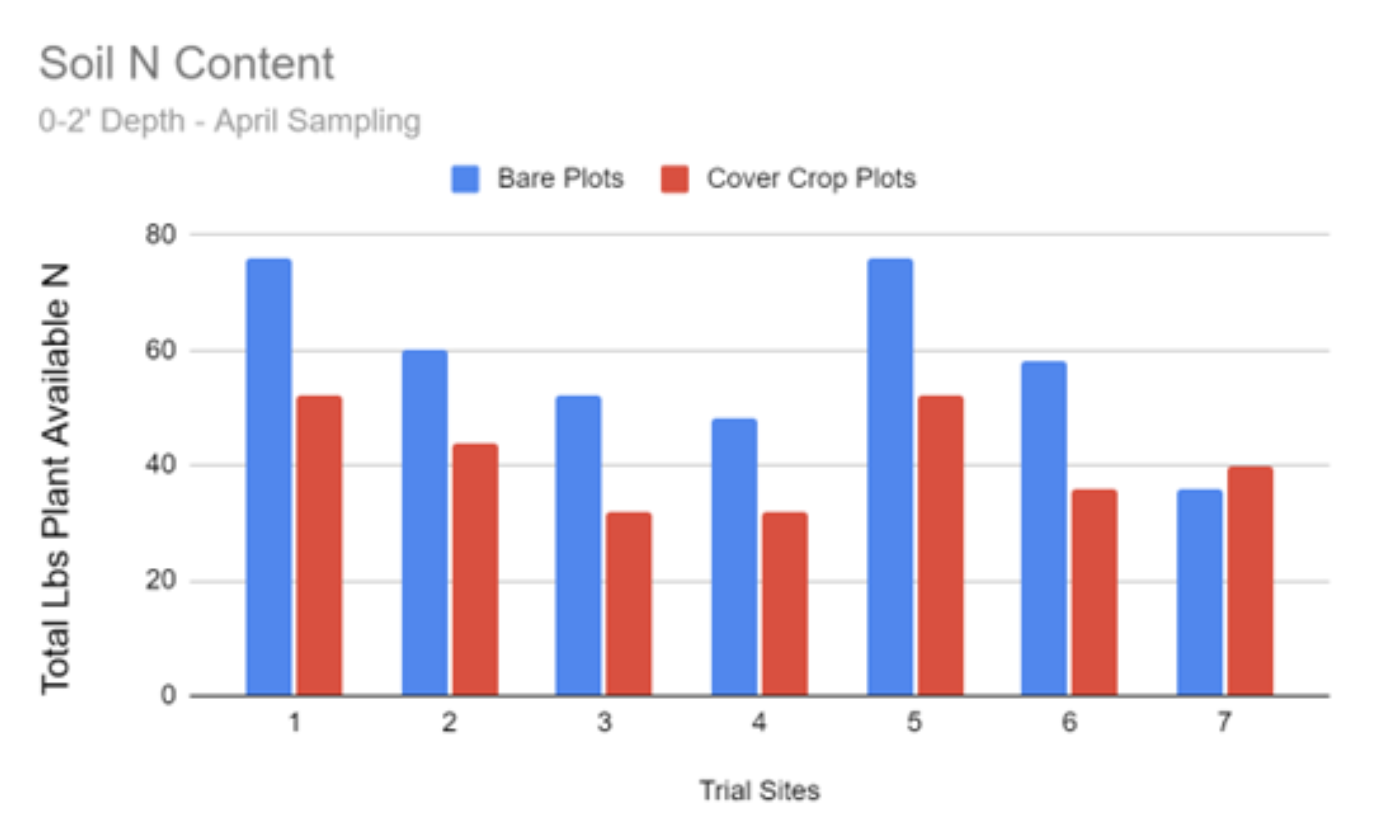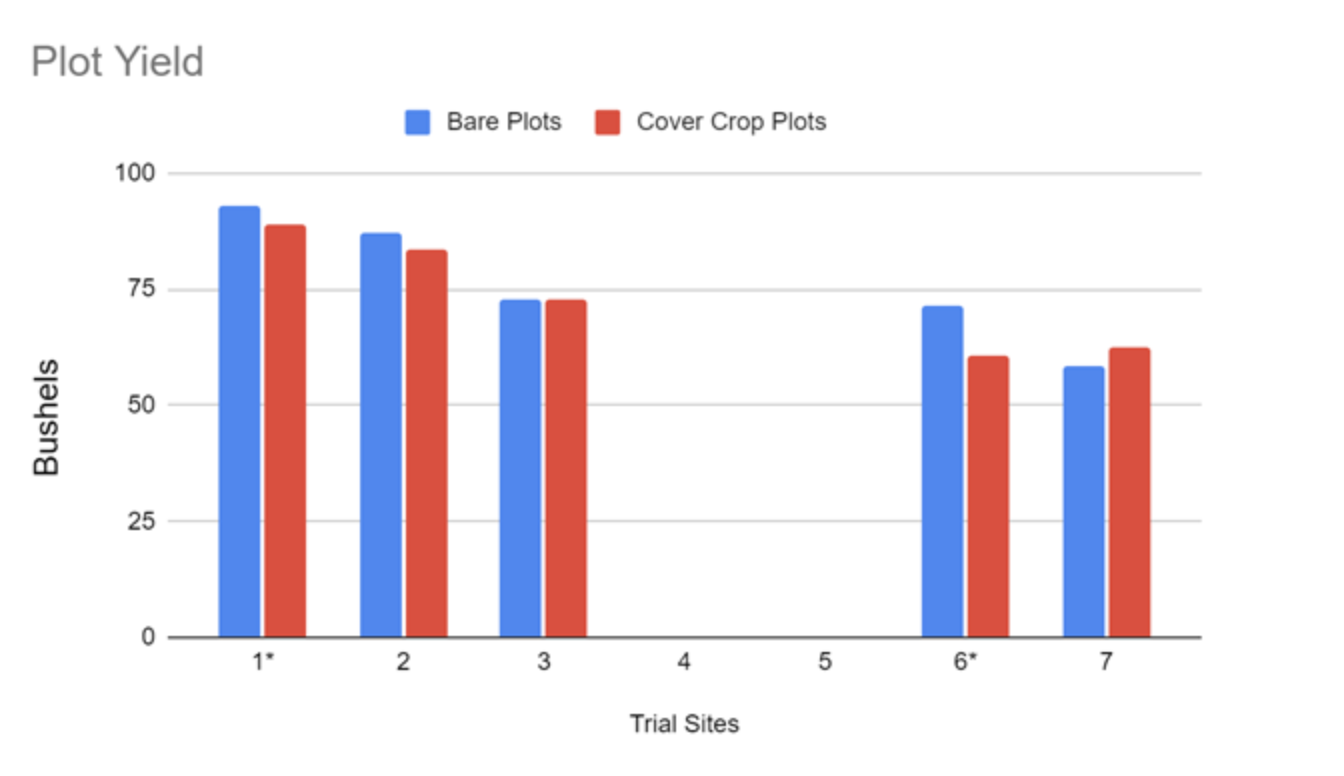by Frank Rademacher, CCA and Conservation Agronomist with The Nature Conservancy
In a previous ISAP blog post, we introduced a trial partnership between Illini FS and The Nature Conservancy, with funding from the Illinois Soybean Association. Using Illini FS cover crop drilling and Nu-tracker soil testing services, we implemented seven split-field cover crop trials. These plots were subjected to three rounds of soil and plant tissue testing to better educate retailers and farmers on the impact of cover crops on nutrients in the soil and plant. Testing was performed in fall, spring, and summer so we could examine differences over time. We now have had a chance to look at the yield data to get a comprehensive view of our results.
Soil Tests Show Huge Nitrogen Benefits to Covers
The most immediate benefit to the cover crop was nitrogen scavenging potential. Our nitrogen testing took two samples per round: One from 0-1’ and another from 1-2’ deep. This test also broke out the two primary forms of soil N: nitrate and ammonium. In the cover cropped portion, there was an average of 21 lbs less nitrogen compared to the bare side. Overall, this represented a 34% reduction in total nitrogen in the top 2’ of soil. Almost all of this reduction was of nitrate, the form of N vulnerable to loss by leaching. Of that reduction, the cover crop appeared to remove N equally from both the top 0-1’ and 1-2’ section of soil. Additionally, when looking at volatility risk in saturated soils, the cover crop side was at risk of losing half the amount of nitrogen per day compared to bare plots. See the graph below for each site N levels in April, across the 0-2’ depth.

For growers with delayed termination windows, which forced them to plant their soybeans into large rye, there was an additional 10 lb reduction when compared to the earlier planting neighbors. Though as previously mentioned, this came with planting struggles: makeshift crimpers to lay over cereal rye, stress about planter set-up and termination plans, and more. While there are certainly additional benefits from a high biomass cereal rye cover crop, such as weed suppression, water infiltration/retention, and erosion protection, growers purely interested in N scavenging should likely target lower cover crop biomass to maximize water quality benefits while minimizing planting risk. As this spring proved however, that is not always possible, highlighting the need for flexibility and back-up plans.

Yield Impacts Vary
Our trial participants saw a wide range of yield impacts, from an 11 bushel decrease to a four bushel increase from using cover crops. The average yield loss was three bushels for cover crop plots. Interestingly, the largest yield loss occurred in one of our high biomass plantings, while another high biomass planting was the overall highest yielding plot with a yield disadvantage around the plot average. As mentioned, high biomass plantings likely come with the highest level of risk, especially for beginners. For comparison purposes, the plot numbering in the graph below corresponds to the trial numbers in the N content graph above, and the starred plots (1 and 6), were planted into large cereal rye. Participants 4 & 5 were not able to gather yield data.
When comparing the two graphs, we see that there is a rough correlation between the amount of soil N in April and the yield level. This did not appear to be solely related to site organic matter results, but may have been more of an indication of overall soil quality. Interestingly, although it was a small sample size, there was a relatively similar impact of cover crops on soybean yield regardless of yield environment last season.

Finding the ROI Message
While all participants recognized the N scavenging ability of the cover crop, there was some question about the ultimate return on investment. “What do I do when the funding for cover crops runs out one day?” asked one participant. Another noted that while reducing N loss was important to them, they did not recognize that as a firm economic benefit that could be realized on the balance sheet. Similarly, other growers expressed hesitation when considering things like erosion control, weed program benefits, and long term soil health as tangible returns from cover crop use.
What’s Next?
Several of the trial participants already have a cover crop planted for the 2025 growing season despite the challenges that come from a first attempt. We look forward to supporting their agronomic needs. There certainly appears to be more acknowledgement from new cover crop adopters that the benefits from a soil health system may take a few seasons to become apparent. Concerns expressed above do highlight the importance of messaging when it comes to soil health system benefits however. As conservation professionals, how do we continue to message not only the short-term and long term benefits of soil health, but the tangible and intangible benefits as well? Our partnership with Illini FS continues to develop and their cover crop drilling program is expanding quickly. We look forward to digging into the financials of retailers building new conservation service offerings in coming months and we hope to share those findings this summer, so stay tuned!


 and then
and then